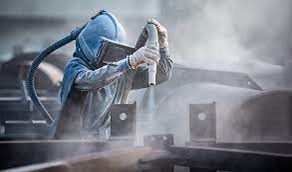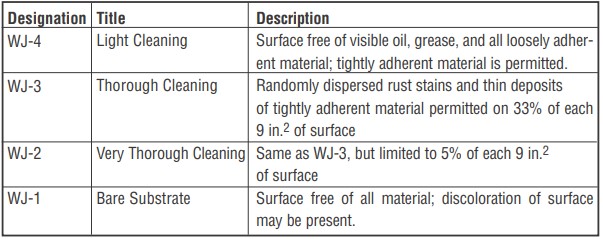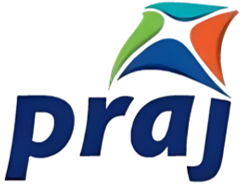The suitability of surface preparation methods for bare steel before coating application depends on the specific requirements of the project and the condition of the steel substrate. Both abrasive blasting and hydro blasting can be used for surface preparation on bare steel, but their suitability varies based on the factors mentioned below:


1. Surface Condition: Light Contaminants and Minimal Coatings: If the bare steel surface has light contaminants, minimal coatings, or is relatively clean, hydro blasting can be a suitable option. Hydro blasting can effectively remove light surface contaminants and loose rust, providing a clean surface for coating application without the need for abrasive media.
Heavy Contaminants and Thick Coatings: In cases where the bare steel surface has heavy contaminants, thick coatings, or stubborn rust, abrasive blasting may be preferred. Abrasive blasting, with the use of abrasive media, can more aggressively remove tough coatings and heavily corroded areas, leaving a clean and profiled surface for coating adhesion.

2. Surface Profile Requirements: Coating Adhesion: Both abrasive blasting and hydro blasting can create a surface profile that enhances coating adhesion. However, abrasive blasting is more effective in achieving specific, controlled surface profiles, which can be critical for certain high-performance coatings.
3. Speed and Efficiency: Faster Surface Preparation: Abrasive blasting is generally faster for heavy-duty surface preparation, especially when dealing with extensive rust, thick coatings, or large surface areas. It can significantly reduce downtime, making it preferable for projects with time constraints.
Lower Downtime: Hydro blasting can also be efficient for surface preparation, but it may take longer than abrasive blasting for heavy coatings and severe rust removal. However, it can be faster for light cleaning tasks and maintenance jobs with minimal coatings.
4. Environmental Considerations: Eco-Friendly Option: Hydro blasting is more environmentally friendly than abrasive blasting because it does not involve the use of abrasive media, which can generate dust and require containment and proper disposal. Hydro blasting uses water, which is safer for the environment.
5. Maintenance Projects: Maintenance and Touch-Up Jobs: For maintenance projects where only partial coating removal or cleaning is required, hydro blasting can be a preferred choice. It allows for targeted cleaning and removal without damaging the underlying substrate.
Ultimately, the choice between abrasive blasting and hydro blasting for surface preparation on bare steel should be based on the specific project requirements, the condition of the steel substrate, the desired surface profile, and the availability of equipment and resources. Consulting with surface preparation experts and coating manufacturers can help in determining the most suitable method for each application.
Furthermore, information:
Direct metal hydro blasting, also known as water jetting without abrasive blasting, is a surface preparation technique that uses high-pressure water jets to clean and prepare metal surfaces for coating application. Unlike traditional abrasive blasting methods, it does not involve the use of abrasive materials, making it a non-abrasive and environmentally friendly option. This process has found significant applications in various industries where preserving the integrity of the metal substrate is crucial. Here's a more elaborate explanation of direct metal hydro blasting and its suitability for coating application.
How Direct Metal Hydro Blasting Works:
Direct metal hydro blasting involves the use of a high-pressure water jet that is directed onto the metal surface to remove contaminants, rust, old coatings, and other unwanted materials. The water pressure is adjusted based on the specific requirements of the surface preparation. In some cases, additives may be mixed with the water to enhance the cleaning efficiency, such as corrosion inhibitors or specialized detergents.
Suitability for Coating Application:
Direct metal hydro blasting is particularly suitable for coating application on various metal substrates due to several reasons:
Non-Abrasive and Gentle Cleaning: Unlike abrasive blasting methods, hydro blasting does not involve the use of abrasive media that could potentially damage the metal substrate. The high-pressure water jetting is gentle on the surface while effectively removing contaminants and old coatings, preserving the integrity of the metal.
Environmentally Friendly: Hydro blasting is an eco-friendly method as it does not generate airborne dust or produce hazardous waste from abrasive media. It reduces the risk of environmental pollution and health hazards for workers.
No Residue or Embedment: Abrasive blasting methods can leave residual abrasive particles embedded in the surface, which may lead to adhesion issues with the new coating. Hydro blasting, being non-abrasive, eliminates this concern, providing a clean and contaminant-free surface ready for coating application.
Surface Profiling: While direct metal hydro blasting is non-abrasive, it cannot create the profile, however, reveals existing profile on metal if it is and can be helped improving the adhesion of the subsequent coating.
Versatility: Direct metal hydro blasting is versatile and can be used on a wide range of metal substrates, including steel, aluminium, stainless steel, and others. It can be adapted to different surface conditions and geometries, making it suitable for various applications.
Reduced Downtime and Faster Coating Application: Hydro blasting can be quicker than certain abrasive blasting methods, which reduces downtime and allows for faster coating application, leading to improved project efficiency.
Applications:
Direct metal hydro blasting is commonly used in industries such as marine, aerospace, oil and gas, automotive, and infrastructure maintenance. It is employed for surface preparation on metal structures, pipelines, tanks, ship hulls, bridges, and more, where a clean, non-abrasive, and environmentally friendly surface is required before applying protective coatings.
Limitations:
While direct metal hydro blasting offers numerous advantages, it may not be suitable for all surface preparation requirements. Extremely tough or thick coatings may be more efficiently removed using abrasive blasting methods. Additionally, hydro blasting might not be the best choice for surfaces with complex shapes and crevices where water penetration could be challenging.
Safety Considerations:
Even though hydro blasting does not use abrasive media, it still involves high-pressure water jets, which can be hazardous if not handled properly. Workers should wear appropriate personal protective equipment (PPE) and follow safety guidelines to prevent injuries.
Conclusion:
Direct metal hydro blasting is a viable and effective alternative to abrasive blasting for surface preparation before coating application. It offers a non-abrasive, environmentally friendly, and versatile method of cleaning but profiling is concern area on metal substrates due to which not getting confidence for ensuring better coating adhesion and improvement on corrosion protection. However, it's essential to consider specific project requirements and surface conditions to determine the most suitable surface preparation method. Consulting with surface preparation experts and coating manufacturers can help in making the right choice for each application.
For surface preparation on bare steel before coating application, both abrasive blasting and hydro blasting have their merits. Abrasive blasting is often preferred for heavy-duty surface preparation, extensive rust removal, and when precise surface profiles are necessary. On the other hand, hydro blasting is suitable for light cleaning, maintenance tasks, and environments where environmental considerations are a priority.
For more information, Kindly contact to BG Group of Coating Consultant.






